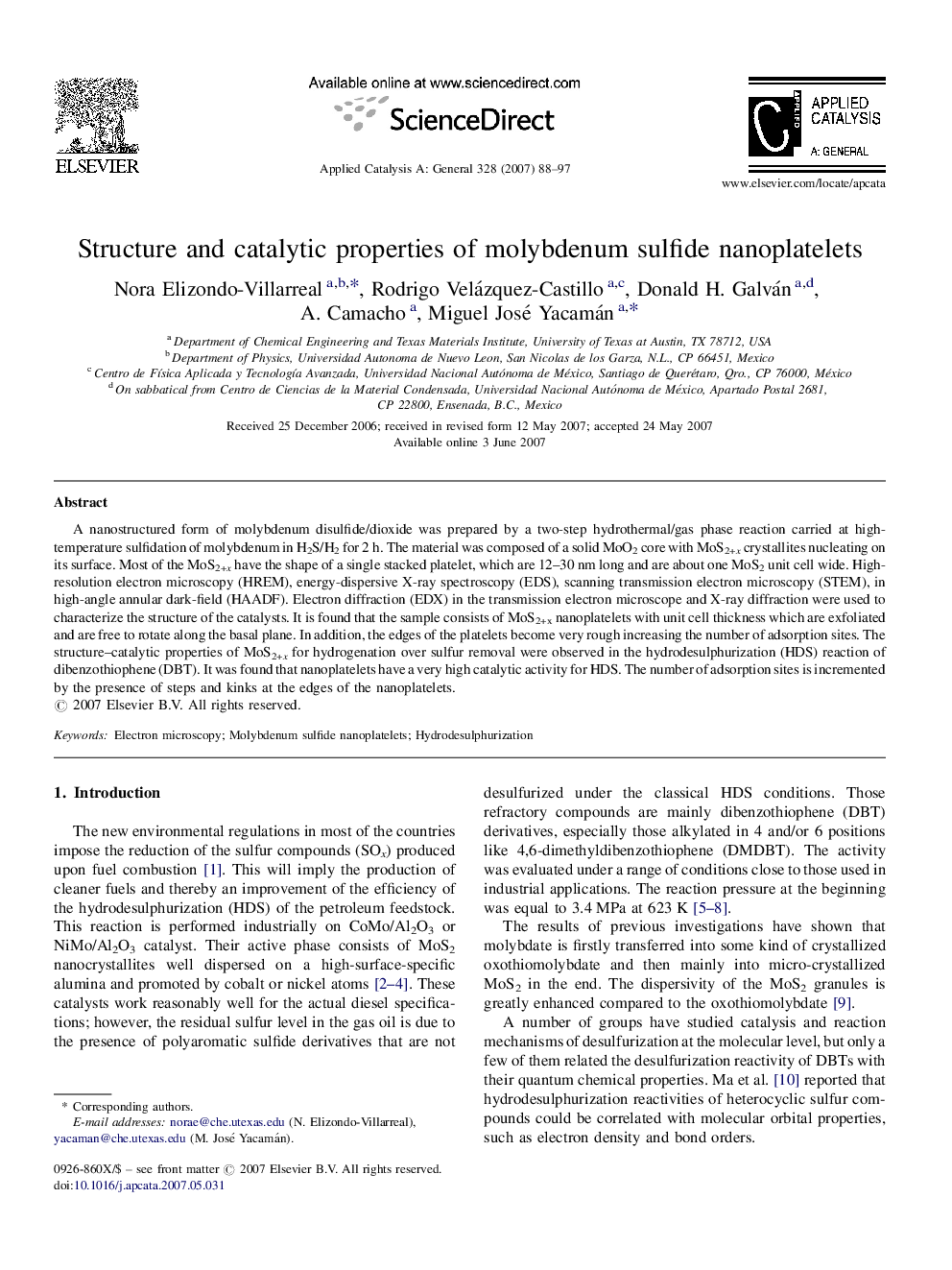| Article ID | Journal | Published Year | Pages | File Type |
|---|---|---|---|---|
| 43507 | Applied Catalysis A: General | 2007 | 10 Pages |
A nanostructured form of molybdenum disulfide/dioxide was prepared by a two-step hydrothermal/gas phase reaction carried at high-temperature sulfidation of molybdenum in H2S/H2 for 2 h. The material was composed of a solid MoO2 core with MoS2+x crystallites nucleating on its surface. Most of the MoS2+x have the shape of a single stacked platelet, which are 12–30 nm long and are about one MoS2 unit cell wide. High-resolution electron microscopy (HREM), energy-dispersive X-ray spectroscopy (EDS), scanning transmission electron microscopy (STEM), in high-angle annular dark-field (HAADF). Electron diffraction (EDX) in the transmission electron microscope and X-ray diffraction were used to characterize the structure of the catalysts. It is found that the sample consists of MoS2+x nanoplatelets with unit cell thickness which are exfoliated and are free to rotate along the basal plane. In addition, the edges of the platelets become very rough increasing the number of adsorption sites. The structure–catalytic properties of MoS2+x for hydrogenation over sulfur removal were observed in the hydrodesulphurization (HDS) reaction of dibenzothiophene (DBT). It was found that nanoplatelets have a very high catalytic activity for HDS. The number of adsorption sites is incremented by the presence of steps and kinks at the edges of the nanoplatelets.
Graphical abstractA nanostructured form of molybdenum disulfide/dioxide was prepared by a two-step hydrothermal/gas phase reaction carried at high-temperature sulfidation of molybdenum in H2S/H2. Image of HAADF-STEM shows that the lines of contrast appear with a saw tooth contrast. The number of adsorption sites is incremented by the presence of kinks at the edges of the nanoplatelets.Figure optionsDownload full-size imageDownload as PowerPoint slide
